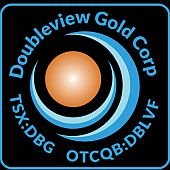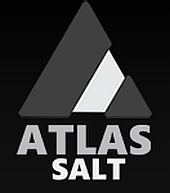 Arizona Silver drills 20 m of 5.2 g/t Ag at Ramsey
Arizona Silver drills 20 m of 5.2 g/t Ag at Ramsey
2017-12-05 14:09 ET – News Release
Mr. Greg Hahn reports
ARIZONA SILVER EXPLORATION INC. RESULTS OF DRILL HOLE TEST OF THE WESTERN IP ANOMALY AT RAMSEY SILVER PROJECT, LA PAZ COUNTY, ARIZONA
Arizona Silver Exploration Inc. has released the results of a test hole drilled into the western IP (induced polarization) anomaly at the Ramsey silver project located in La Paz county, Arizona.
Drill results
Hole R1713 was drilled vertically to test the western IP anomaly on IP line 1. The hole was located approximately 800 metres west of the Ramsey mine workings and was targeted to test a geophysical model that suggested the source of the IP anomaly was 100 metres below the surface and had modelled dimensions of roughly 500 metres cubed.
“The presence of the silver signature in this hole this far from the Ramsey mine and adjacent drill holes is an indication of the strength of the mineral system we are chasing at Ramsey. The vector of increasing potential to the east is clear, and that is the direction we are heading with our Q1 2018 drilling program,” stated Greg Hahn, president and chief executive officer.
The hole penetrated 15 metres of alluvial cover and then went through 110 metres of iron-rich Cretaceous metasediments before encountering a significant fault (detachment fault?) which separates the overlying metasediments from an underlying granitic intrusion. The granitic intrusion is strongly altered with chlorite-calcite-oxidized pyrite (propylitic assemblage) and contains zones of strong silica alteration and quartz veining. The hole bottomed in propylitic granite at 213-metres depth. This granite is not exposed anywhere around the Ramsey mine property, and where it is exposed five kilometres to seven kilometres to the west it is not as strongly altered as in drill hole R1713.
Assay results show a zone of anomalous silver ranging up to 10 grams per tonne Ag in the interval 375 feet to 440 feet (114 m to 134 m) averaging 5.2 g/t Ag. This mineralized interval straddles the detachment fault. The presence of a strong silver anomaly across the detachment fault 800 metres west of the mineralization exposed in the Ramsey mine workings and peripheral drill holes is an indication of how strong the mineral system is, and further supports a vector of increasing potential to the east where there is a strong surface geochemical anomaly associated with a multilithic breccia (diatreme?), hydrodynamic fracturing, and argillic alteration of the host rhyolite, and where the company intends to drill in the first quarter of 2018. There is no appreciable gold associated with the banded silica intervals in hole R1713.
The results of R1713 do not adequately explain the IP anomaly, as very little fresh pyrite or other sulphide minerals were identified in the drill cuttings. Successful drilling in 2017 has demonstrated the Ramsey silver system is wide open in three directions: south, east and north of the original Ramsey mine. The silver mineralization is close to the surface, rendering it possibly amenable to open-pit development. The 2018 drill program will start with stepping out farther than ever before (as much as 300 metres). The company’s drilling program continues to head in the direction of the silver-rich Creosote vein, which returned a grade of 877 g/t Ag from a sample in March, 2017. The company is financed for the initial 2018 drill program and looks forward to continuing to expand the dimensions of the silver mineralized zone. So far every drill hole into the Ramsey mine target has hit silver mineralization, giving the company a record of 11 hits for 11 holes on Ramsey target. The company encourages you to visit its website for updated information, images and videos.
Quality assurance/quality control and analytical procedures
All drill cuttings were transported under strict chain of custody by ALS Minerals personnel to the ALS Minerals laboratory in Tucson, Ariz., where samples were dried and crushed to 70 per cent passing two millimetres, a 250-gram split is taken and pulverized to 85 per cent passing 75 microns, subject to a four-acid digestion, and then analyzed by ICP/MS for a 48-element package including silver, lead and zinc. Samples over 100 parts per million silver and over 10,000 ppm lead or zinc are reanalyzed using ICP for higher concentration levels. Selected intervals with high silver values will be resubmitted for one-assay-ton fire assays for gold.
Mr. Hahn, president and chief executive officer and a certified professional geologist (No. 7122), is the qualified person under National Instrument 43-101 responsible for preparing and reviewing the data contained in this press release.
We seek Safe Harbor.
http://arizonasilverexploration.com/news-releases/
































